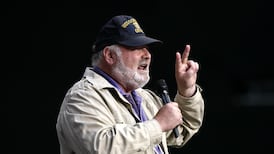Scientists in the Netherlands have developed a mathematical model which shows for the first time that couples can actively promote stability in their relationships by learning to time their emotional responses to one another – precisely.
The team at Radboud University in Nijmegen says the research not alone confirms that the course of true love can be tracked in a series of sinus-wave graphs, but shows for the first time that responding with just the right delay to your partner’s emotional cues is the secret of long-term harmony.
The appropriateness of the delay, however, is not easy to master, according to Polish neuroinformatician Natalia Bielczyk, who led the research on the cusp of applied maths and cognitive psychology, published in the Elsevier journal, Applied Mathematics and Computation.
On the other hand, those who get it just right will apparently find they can have a positive effect on the computational “oscillations” which represent the dynamics of their relationship – without ever trying to “change” their partners’ more annoying tendencies.
“Responses that are either too prompt or too delayed may cause trouble,” says Bielczyk. “Below a certain value, delays cause instability and above this value they lead to stability, showing that some minimum level of delay can be beneficial for a relationship.
“The fact that emotional reactions which are too fast can lead to destabilisation shows that simply reflecting one other’s moods is not enough for a stable relationship. A certain minimum length of time is necessary for compound emotions to form.”
The dynamics of a love affair, she says, usually look like a pretty perfect sinus wave – a smooth repetitive oscillation of highs and lows. For some couples, the departure of that initial glow and the subsequent failure to pay enough attention to “efficient communication” means the sinus wave loses its smoothness and veers out of control. Perfect harmony, however, is that special moment when “both partners reach a stable level of satisfaction – and the sinus wave disappears”.
In 1988, Steven Strogatz of Cornell University was the first to show that romantic relationships could be tracked using two-dimensional models – famously modelling the trials and tribulations of Romeo and Juliet to support his thesis.
Now the finding that “unstable” relationships were not pre-destined and could be “stabilised” has led to a new tongue-in-cheek discipline in the Netherlands – “mathematical relationship counselling”.








